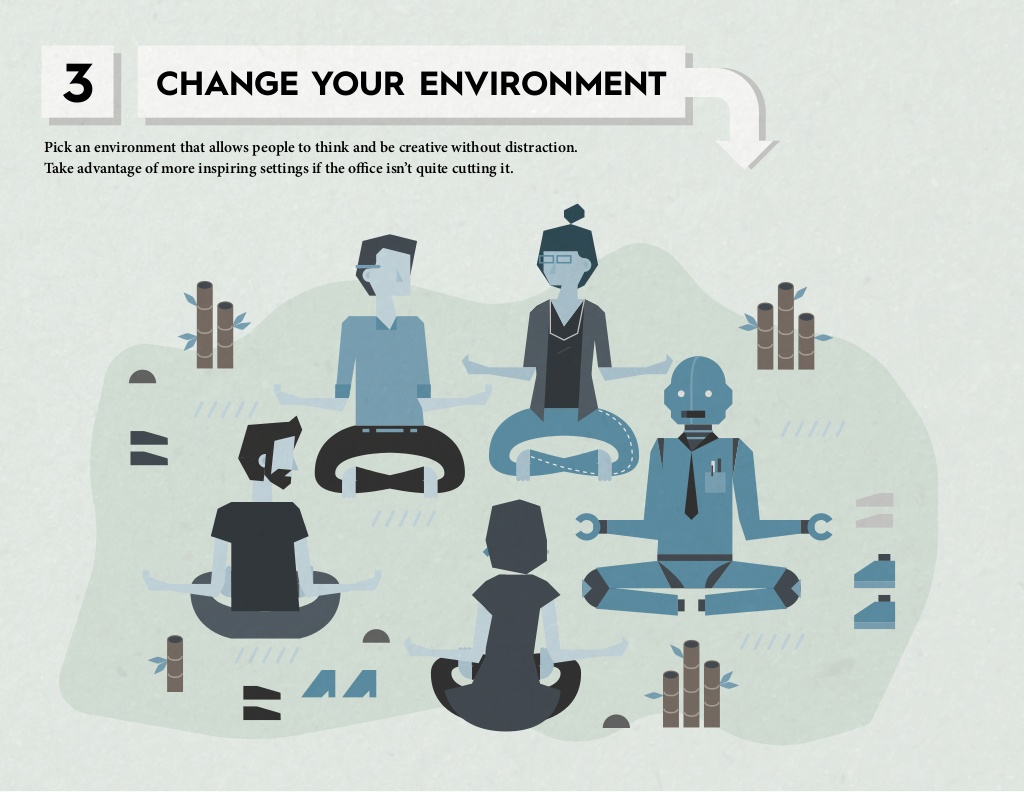
It’s not always easy coming up with new and interesting blog post topics. And, when it’s your job to churn out fresh, new content on a regular basis, it’s easy to get writers’ block.
Fortunately, there are some exercises that you can do that can help get your wheels turning. Brainstorming sessions among your team can be highly productive — if done correctly.
It can be dangerous walking into a brainstorming session without a plan. To get the creative juices flowing, here are a few ways to liven up your brainstorming sessions and improve your team’s output of ideas.
If you need help streamlining your blog writing process, download our step by step guide for Better Blogs in Less Time.
1. Associative Brainstorming
If you are stuck in a rut, associative brainstorming can help you and your team create some really interesting blog post ideas.
To begin, have a few topics that closely relate to or summarize the topic you want to generate blog post ideas around. If you have a whiteboard, or a big easel with paper, write the word on the board in front of your team. Ask your group to come up with some blog ideas that relate to that topic, then share them with the group.
You can also perform this exercise on your own, letting your mind run freely. Don’t let your mind get too caught up in any specific subject. You can always come back to your ideas and edit them to find your fresh list of blog topics.

2. Brainwriting
Brainwriting is a great group exercise that will help you develop new and interesting blog topics.
In brainwriting, each participant writes three ideas on a piece of paper and passes that paper to the person next to them. The next person then uses those three ideas as triggers for the next three ideas of their own.
Feel free to customize this process as you see fit for your team. For example, you can play around with the time limit, trying out three to five minutes, depending on how much time you have. You can also change the number of ideas to generate in each round.
Let the ideas flow, whether they are good or bad, then sit down and go through all the ideas as a group, adding the brilliant ideas to your content calendar and scrapping those that aren’t a good fit.
3. Create a Mood Board
Mood boards are ideal for visual learners as they combine imagery, color, and visual-spatial elements to spark new and fresh ideas. Not to mention, they have been proven to improve information recall in comparison to more conventional methods of learning.
A mood board is a random collection of images, words, and textures that closely relate to a topic, theme, or ideas.
Creating a mood board, whether it’s physical or virtual, can help you gather and categorize your thoughts, while it also works to help spark new ideas.
If you are looking for a great tool to help get started with your Mood Board, try Niice.

4. Change Up the Scenery
Are you still brainstorming in the same conference or cubicle? It may be time to bust out of your element and find a new place to curate your thoughts.
Switching up your physical environment can actually affect the way your brain works. Neurobiologists believe enriched environments can speed up the rate at which the human brain creates new neurons and neural connections. In other words, your typically brainstorming spot could have an affect on the ideas your team comes up with.
If you can’t leave your office space, try holding a brainstorming session in a room that isn’t associated with regular team meetings. Or, you could even try switching something up in your regular meeting room, like rearranging the chairs or putting pictures on the walls. This could be all the difference your team needs.

5. The Question Game
Like associative brainstorming, the question game starts with a word or topic, however, the group works to question everything around that topic.
You can even take your recent blog post. For example, if your recent blog post, was about inbound marketing, you could ask:
- – What is inbound marketing?
- – Why should I care about inbound marketing?
- – What are the biggest inbound marketing mistakes?
- – How do I create an inbound marketing strategy for success?
- – …and so on
If ideas pop into your head, don’t disregard them. Simply write them down and come back to them since they may spark even more ideas later on.
6. Change It Up
You may have some great blog titles that simply need to be changed up a bit.
In your group brainstorming session, get five or six people to pick a blog post title. Ask them to write on a sheet of paper and bring to their meeting.
Once everyone’s ready, have each person pass their sheet to the person next to them. Once the participants are looking at a different blog title than their own, ask them to change two elements in order to create a new title. Pass the sheets again and repeat.
This can go on for quite a while, but by changing up the titles ever so slightly each round, you can create an entire list of new blog post ideas.
7. Take Your Efforts to the Web
While brainstorming is typically a collaborative effort, sometimes it can prove to be a challenge. With access to the Internet at your fingertips, it can be easier to take your efforts to the World Wide Web.
Prior to a brainstorming session, it may be a good idea to ask your participants to do some research on interesting topics via what your competitors are doing and other muses.\
Buzzsumo is a wonderful tool that allows you to find relevant topics related to your business. You can research successful blog posts in your industry, changing those titles to similar (albeit better) titles of your own.
For example, a quick search with inbound marketing yields the following results from Buzzsumo and you can search by the number of social shares to find the most popular topics. Then, you can change these topics to make them your own.
In order to keep your group organized with their ideas, create a Google Doc, or utilize a tool like Basecamp.
8. Create Better Blogs in Less Time
Are you ready to start writing? Once you have fleshed out all of your blog topics, creating an effective outline is key.
Blogs that jump from topic to topic will only frustrate the reader and increase your bounce rate. Plus, not having a clear storyline can be stressful to the writer! By creating a clear and concise blog post outline, you’ll master your SEO, engage your readers, and keep yourself organized.
Download our step by step guide for Better Blogs in Less Time to streamline your blog writing process and create kickass content.



